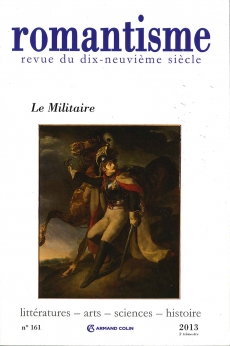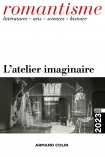
Romantisme n° 161 (3/2013)
Pour acheter ce numéro, contactez-nous
Recevez les numéros de l'année en cours et accédez à l'intégralité des articles en ligne.
Aurélia accomplit le dessein de l’oeuvre romantique. En renvoyant, dès les premières pages du récit, aux « modèles poétiques » d’Apulée, de Dante et de Swedenborg, Nerval conçoit cette nouvelle « étude de l’âme humaine » comme la synthèse de trois époques – l’Antiquité, le Moyen Âge, le XVIIIe siècle –, de trois formes de religion – le paganisme, le christianisme, l’illuminisme –, et de trois genres littéraires : le conte initiatique, l’autobiographie spirituelle, et la littérature visionnaire. Nerval romantise ainsi les modèles du passé, en ceci qu’il les reprend dans le cours d’une littérature universelle progressive, mais en ceci aussi qu’il les ressource au foyer de la subjectivité infinie : car ici la vie donne sa substance à l’oeuvre, pour que l’oeuvre en retour illumine la vie d’une vérité poétique.
The goals of the romantic work are fully realised in Aurélia. Nerval, in referring, in the very first pages of the novel, to the « poetic models » represented by Apuleius, Dante and Swedenborg, conceives of this new « study of the human soul » as of the synthesis between three periods – Antiquity, the Middle Ages, the 18th century –, three religions – paganism, Christianity, Illuminism –, and three literary genres : the narrative of initiation, the spiritual autobiography, and visionary literature. Nerval thus romanticises and novelises the models from the past, in that he takes them up again as part of the progress of a universal literature, but in that he also gives them a new life through exposing them to infinite subjectivity : for here life gives its substance to the work, in order that the work in its turn should bring life the light of poetic truth.

